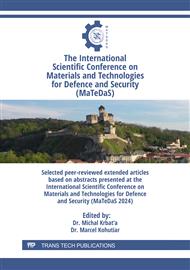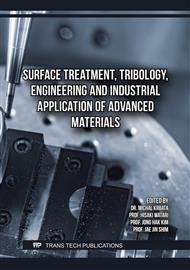p.27
p.41
p.57
p.65
p.73
p.85
p.99
p.105
p.115
Monitoring the Soft Sludge and Water Content of Hydraulic Oil Samples Using Drop Analysis
Abstract:
Water or moisture contained in any form in hydraulic oil is not desirable in a hydraulic system. It can cause emulsification of the oil, which results in deterioration or rupture of the lubricating film, as well as corrosion of metal parts in this system. This corrosion can cause damage to metal parts and impair their functionality. Regular control of the amount of water in hydraulic oil is therefore a very important part of hydraulic oil diagnostics. The article presents a case study of monitoring the condition of hydraulic oil for water content values, which were determined according to the Karl Fischer method. The analysis of hydraulic oil in the article was also an experimental drop analysis for monitoring water in hydraulic oil, which we classify as a quick and simple chemical method aimed at indicatively demonstrating the presence of water in oil and the degree of oil contamination. This analysis belongs to non-dismantling technical diagnostics. Its greatest advantage is that with its help, oil analysis is faster and cheaper compared to analyses performed in laboratories.
Info:
Periodical:
Pages:
73-84
Citation:
Online since:
June 2025
Authors:
Keywords:
Price:
Сopyright:
© 2025 Trans Tech Publications Ltd. All Rights Reserved
Share:
Citation:



